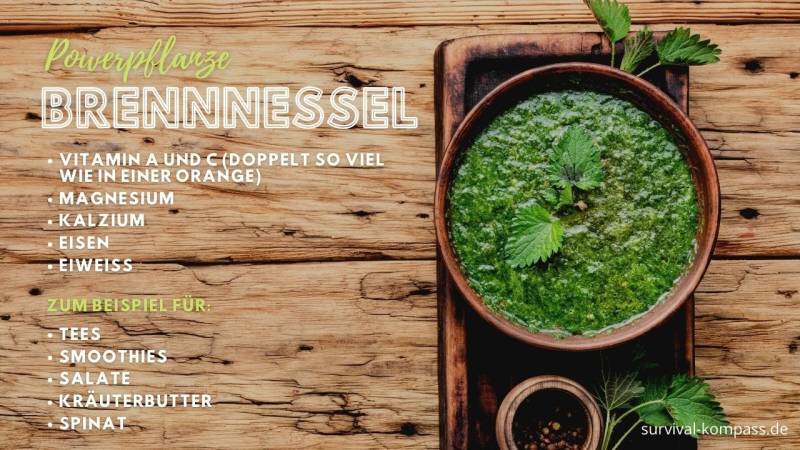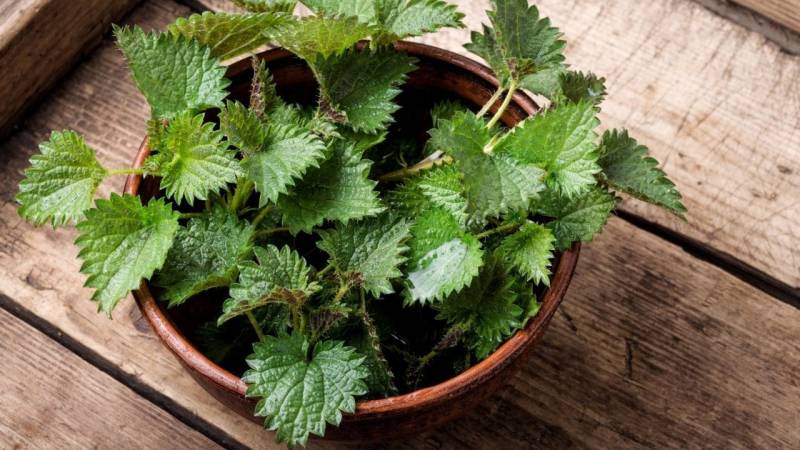
The nettle - this versatile power plant should become your outdoor friend
👉 The key facts from this guide
- The nettle is a versatile crop that has been used since the Stone Age.
- It grows almost everywhere on earth except in the Arctic.
- The plant can be used to make ropes, clothing, and as a remedy.
- Nettles are rich in vitamin A, C, magnesium, calcium, iron, and protein.
- As food, they can be used as tea, smoothie, salad, spinach, or in pancakes.
- Nettle seeds contain hormone-like substances, vitamin E, and linoleic acid, which can contribute to fertility.
What is your first memory of the stinging nettle?
Well, I mean the first one that you were really aware of?
Most of us have already encountered this versatile plant.
And rarely was it a good experience. Ouch.
But my first experience was a good one.
I was behind the greenhouse with my grandma, picking nettle leaves with her.
I still hear her saying today:
You have to touch it from the bottom to the top of the stem, then it won't sting.
Today I know that it's because the little hairs predominantly grow upwards.
So: don't just grab it.
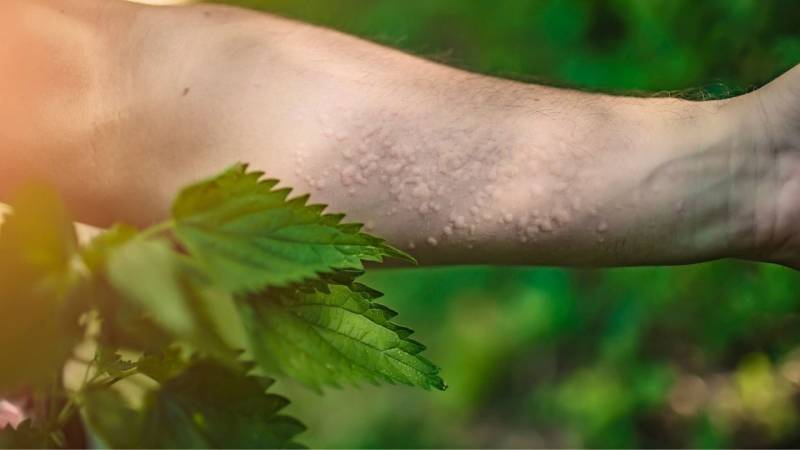
Back then, I didn't realize how versatile the stinging nettle really is.
Who hasn't been in the woods, built their bushcraft camp and then realized they don't have enough rope?
Or forgot to bring sides to their 3-course meal? Maybe your shoelace broke while hiking with no usable replacement in sight.
You will now learn all the important facts about the stinging nettle and how to use it in the wilderness as food, for ropes, and as a medicinal plant.
Useful plant since the Stone Age
The stinging nettle is one of the most versatile "weeds" we know.
For several thousand years, clothing and even uniforms have been made from nettle fibers. The Celts (circa 650 BC) made ropes, sacks, and fine shirt fabrics from nettle fibers.
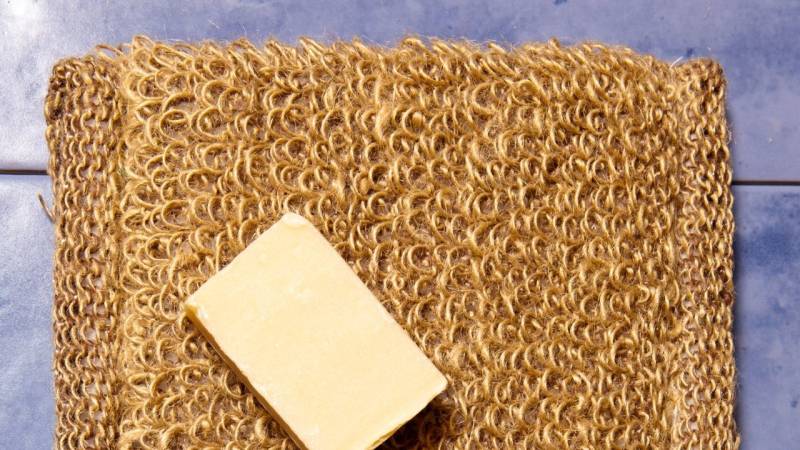
Even in the Stone Age, nettle was already used to produce nets, traps, and carrying bags. Besides linen and hemp, nettle was the third most important fiber and spun plant in ancient times.
Around 1900, the poorer population sewed their clothes from the fibers. Due to the shortage of raw materials in World War II, fabric woven from nettle fibers was even increasingly used for arm clothing.
But it gets even better. Nettle is edible and you can make ropes from it. But more on that later.
You can find the large nettle everywhere
It is an absolute globetrotter and spreads everywhere, like aphids in spring.
The only country where the Urtica genus plant does not occur is the Arctic.
It is particularly diverse in China, however.

Fourteen of the 30 to 70 nettle species are native to Europe. In the German-speaking region, there are at least four species.
They prefer to grow in nutrient-rich places. On fallow land (e.g. in the popular "lost places" I ALWAYS find nettle), in gardens, forest and roadside edges, and on slopes.
This is how you recognize nettle
You can easily recognize it:
- It never grows as a single plant, but rather besieges entire areas in clusters.
- The plant can grow anywhere from 10 to 300 centimeters tall depending on the species.
- The spear-shaped leaves grow opposite each other in a cross pattern (two large and two small) on square stems.
- The leaves are always more or less serrated and covered with stinging hairs, like all above-ground parts of the plant.
The stinging hairs are meant to deter predators, with varying levels of success, as many butterfly and moth caterpillars use this to their advantage.
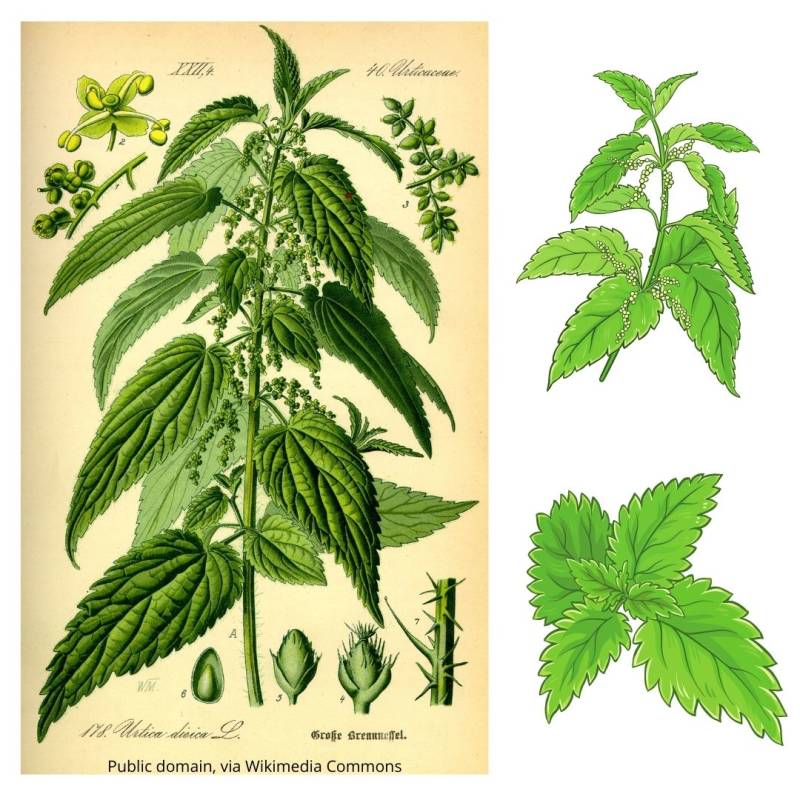
I'm fascinated by how resourceful nature has been in developing these hairs
The most cutting-edge technology would cost as much as Uncle Scrooge has in his safe to achieve the same results that spring up from the ground every year.
The tiny single-cellular tubes consist of silica in the upper part, making them brittle like glass. The bottom part, which swells significantly in comparison, is nestled in a cell filled with formic acid solution.
The very thin wall of the tip above it creates a kind of breaking point. When broken, the tip punctures the skin and the fluid can enter, causing the well-known burning pain.
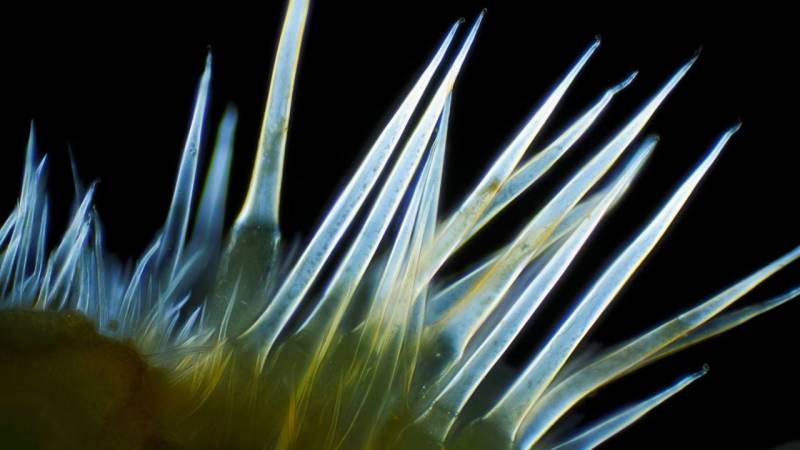
You can confuse it with some other types of nettle, but all of them are harmless and easily distinguishable by the absence of stinging hairs.
For the following uses, it is best to use the large stinging nettle that is common in our region.
Bushcraft with stinging nettles
Now let's head over to Master Eder's workshop. How does stinging nettle help us in the bush?
Creating a sturdy cord for tensioning the tarp, as a hanger for your backpack, as a replacement for shoe laces, or much more, can be quickly made even by bushcraft novices.
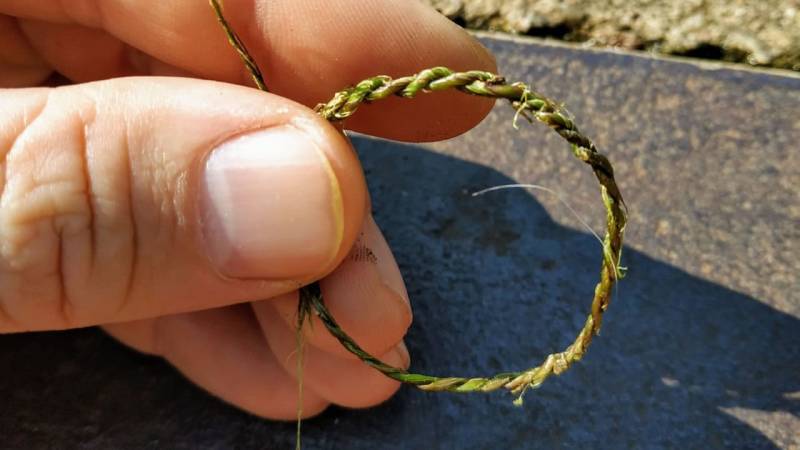
You remove the outer fibers from the stem of the nettle, creating fiber strips that are at least two or more millimeters wide.
Always tie together two strands and affix them to a branch, shoe, or elsewhere. Now twist each strand clockwise and as soon as they start to twist together, twist them in the opposite direction.
You reach the length by incorporating the next fibers into the emerging rope just before the end of each individual fiber. This creates a strong rope that can even lift and hang a 25 kg backpack.
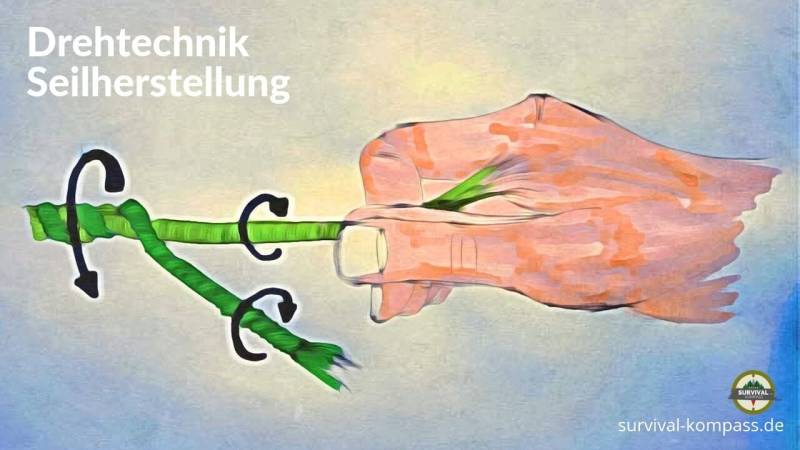
I have dedicated a complete guide to rope making. There you will find a step-by-step guide and many colorful pictures, as well as a video.
Check it out here: How to make your own ropes.
Popular medicine for our ancestors
Even before Christ, poems were written and songs sung about the health benefits of today's weed.
Our ancestors already knew about the blood-purifying and detoxifying effect of this plant. The nettle has a diuretic and detoxifying effect.
Therefore, a tea infusion made from its leaves can help with:
- Bladder infections
- Kidney stones
- Kidney gravel
It also helps with:
- Various skin diseases
- To alleviate rheumatism and gout (as crushed fruits)
- For blood formation
- To increase the enzyme production of the pancreas
- For digestive problems
- For gallbladder disease
- For high blood sugar
- For inflammation
External application for:
- Dandruff
- Oily hair
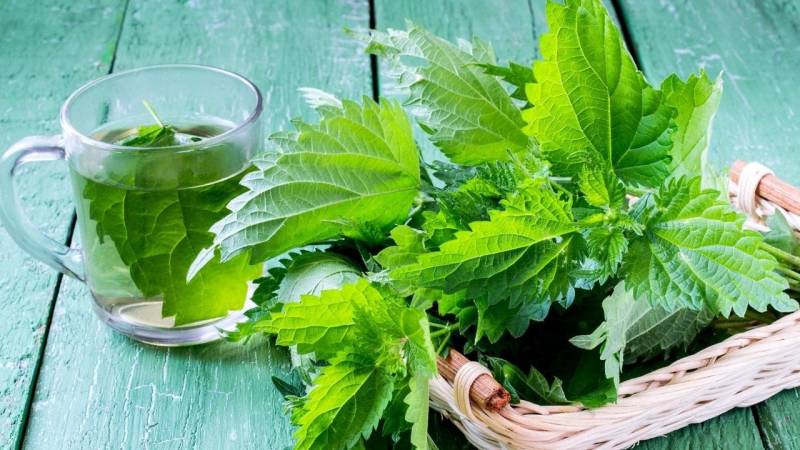
The root (as a tincture), on the other hand, helps with urination and alleviates discomfort in the early stages of prostate problems.
Interesting to know: nettle is said to have a cancer-preventive effect.
I would like to briefly mention the seeds in particular. Because they contain:
- Hormone-like substances
- Sitosterol (belongs to the group of phytosterols, whose chemical structures are similar to that of cholesterol)
- Vitamin E (up to 0.1% / 100g)
- 30% fatty oil (especially linoleic acid)
All these active ingredients are said to contribute to fertility, stimulate general bodily functions, help against chronic fatigue and performance and potency weakness.
In nursing mothers, milk production is said to be stimulated and in men, sperm production.
Amazing, isn't it? Did you know that nettle has as much power as Popeye's spinach cans?
Fun fact on the side: In the Middle Ages, monks and nuns were forbidden to eat nettle seeds. These were considered to be an aphrodisiac and apparently had incredibly invigorating effects.
Whether this is true or not, everyone must decide for themselves. ;-)
What is a fact, however, is that the Celts already used nettle seeds as a strengthening agent.
And the Germanic tribes (and probably also the Celts) dedicated the nettle to their thunder god Donar (also known as Thor). This god stood for fertility, male potency and successful brewing of beer.
Cheers.
Delights from the nettle
The nettle is an annual plant. It dies in autumn and only grows again from the roots in spring.
That's why you should stock up on it, for example, for your tea or as a source of vitamins for the winter.
The best time to collect the green shoots is from early March to the end of May.
Leaves as spinach, salad, or pasta
Your pantry is stocked. But unfortunately, you realize that a tasty side dish is missing for your vegan or traditional meatball.
Here, too, the nettle can be used in many ways. As soup, puree, pesto, or as a side dish (for the recipe nettle pasta) it is suitable.
And you can make teas, smoothies, salads, or even herb butter from the nettle. The upper delicate tips are great for a wild spinach.
The male, elongated flowers are suitable when sautéed in butter as decoration.
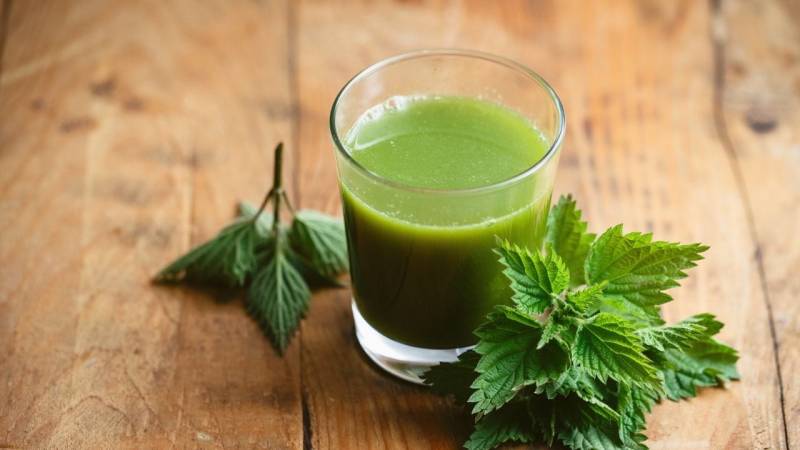
In addition, nettles provide you with vitamin A and C (double the amount found in an orange), magnesium, calcium, iron, and protein.
Small tip: Before consuming raw, roll the leaves between two layers of cloth with a stick or squeeze tightly in the fabric. This destroys the stinging hairs and removes their effect.
Garlic mustard, ground elder, or wild chives seasoned with salt are a great addition.
For more plant knowledge, also read my article "Edible plants: this emergency food can be found in the forest (list + pictures)".
Nutty seeds
You can crush the seeds of the female plants and sprinkle them over salads or other dishes.
They have a slightly nutty taste and can be collected between early September and late November.
The best way to collect the seeds is by drying the entire panicle.
You can rub the dry plant parts together like a ball of wool and the seeds will easily detach.
To store the seeds, put them in a dark glass jar or porcelain vessel.
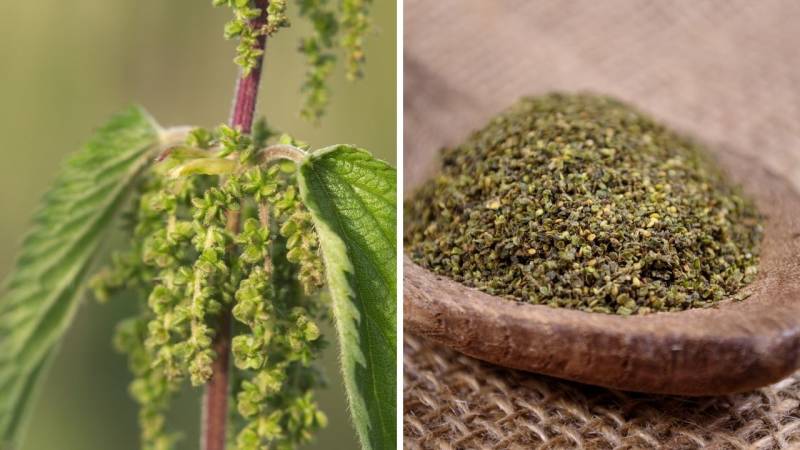
My favorite recipe: Hearty nettle pancakes
Here's one of my favorite recipes that will give you a boost of vitamins:
- 4 eggs
- 500 ml milk
- 1 pinch of salt and pepper
- 250 g flour
- 2 tablespoons of butter
- 4 handfuls of fresh young nettle leaves
Preparation:
To safely process the nettle leaves, pour boiling water over them. This will neutralize the stinging hairs. Now you can remove the leaves from the stems and chop them small.
- In a bowl, mix the flour, eggs, and milk to make a slightly thick batter.
- Add salt and pepper to taste and stir in the melted butter.
- Stir the batter until it’s smooth and let it rest for 20 to 30 minutes.
- After the batter has rested, mix in the nettle leaves.
- Fry the pancakes in a pan with heated oil over medium heat on both sides. For decoration, you can fry the flowers in butter and sprinkle them over the pancakes.
Enjoy!
Also read
9 Recipes with Wild Herbs for Camping and Outdoor – These 9 delicious recipes with wild herbs bring the taste of the forest to your next camping trip. From crispy bread to aromatic soup.
If you enjoyed the report and are excited for my next plant portrait, stay tuned.
Have you ever eaten nettles? Were you successful in making ropes from them? Write it in the comments.


Author of the guide
Martin Gebhardt
Hey, I'm Martin. On my blog, you will learn the basics and numerous details about living in the wild. I think survival, bushcraft and the good life in nature are the keys to happiness. Find me here on Instagram or on YouTube. You can find more about my mission on the About Me page.
Was this guide helpful?
61 people found this guide helpful.
5.00 out of 5 points (61 Ratings)
Comments (0)
This post may contain affiliate links. So if you click on the links and make a purchase, I will receive a small commission at no additional cost to you. Click here, to learn more about it.



